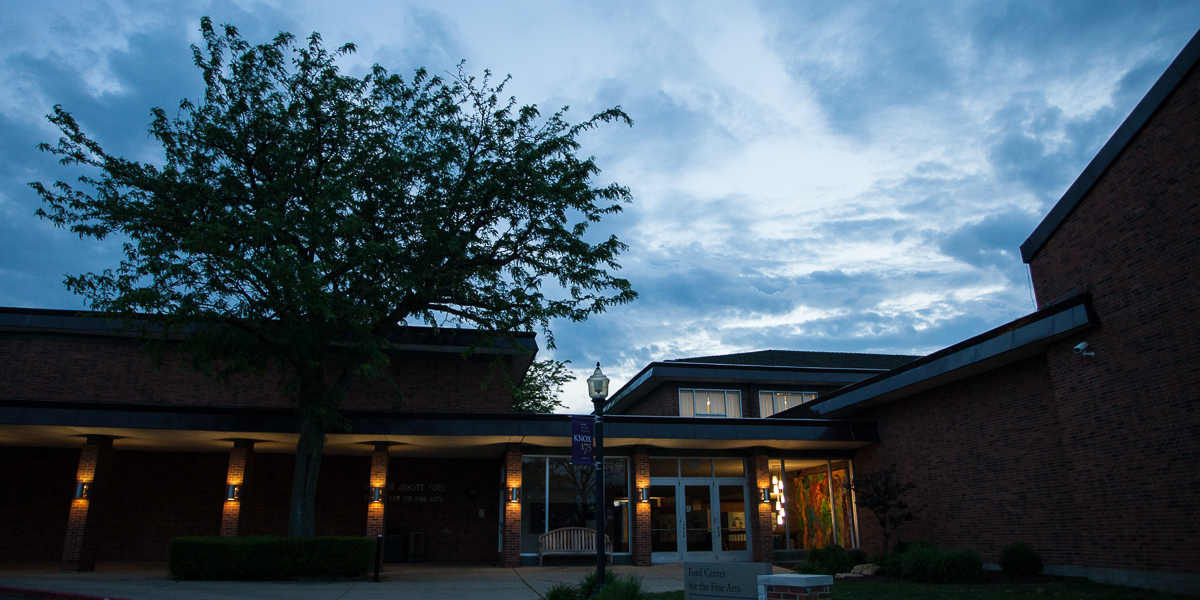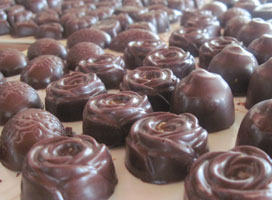

Venture Boldly

Adriana Colindres
Features Editor
2 East South Street
Galesburg, IL 61401

by Matt McKinney '13
Two of the most demanding aspects of studying abroad are adjusting to cultural differences and overcoming language barriers. For Knox College junior Raluca Oprinca, however, those challenges were not especially difficult.
After all, she's had some practice studying in foreign countries.
Oprinca, a double-major in Spanish and French, is a native of Turda, Romania, and she lives with her parents in Castel Goffredo, Italy, when she's not at Knox.
Past experiences with life abroad proved extremely helpful to Oprinca when she participated in the Associated Colleges of the Midwest Study Abroad Research Program in Costa Rica last spring.
The fresh fruit and organic chocolate probably didn't hurt, either.
The ACM program began in San Jose, where Oprinca and fellow students spent four weeks exploring potential research projects. They also studied Spanish in the classroom for up to three hours a day.
Costa Ricans Offer Support, Hospitality
Oprinca attributed her smooth transition to a welcoming atmosphere and a tremendous support system.
"The professors were extremely well-prepared, helpful and always available," she said. "Everyone there -- from Yvette, the woman cleaning the building; to the doorman Don Hermes; to Eduardo Estevanovich, our fantastic Spanish professor -- made the environment really friendly."
For her project, Oprinca was stationed in a village of fewer than 1,000 people that serves as home to the largest organic cocoa plantation in the country. There, she studied levels of empowerment in three groups of women: employees at a chocolate factory, women with other jobs, and homemakers.
A typical day for Oprinca consisted of helping in the cocoa factory while observing the relationships among workers and gathering data through surveys and interviews with women around the village.
"Although I spent a huge amount of time working, I didn't feel stressed there at all," Oprinca said. "Everybody was welcoming me in their houses for interviews, offering me treats, and asking me about my background."
Oprinca said Doña Lucía, her host mother and president of the chocolate factory, was especially supportive. Aware of Oprinca's love of watermelon and other fresh fruit, Lucía served them at meals several times a day. Lucía's cheerful demeanor and optimistic approach to life inspired Oprinca.
"Even though Doña Lucía never attended school, her self-confidence and social skills are absolutely amazing," Oprinca said of her host mother. "She understands that people are people -- no matter their differences -- and she treats foreign tourists, Ph.D.s or her fellow workers all the same way." (Photo at top of page: Raluca Oprinca, right, with her host mother, Doña Lucía.)
After a month of field research, Oprinca returned to San Jose to review the information she'd gathered.
Research Findings Lead to Conference Presentation
At first, her findings seemed surprising. Most of the reports she encountered while preparing for the study had suggested that, in general, homemakers feel less empowered than women with jobs that take them out of the house.
Oprinca's research, however, revealed a more complex situation.
She found that homemakers and employees working 12-hour shifts on plantations and in other factories reported far lower levels of self-esteem than the women in the chocolate factory, who worked only two or three days a week in four-hour to eight-hour shifts.
"In this case, it made perfect sense -- the employees I studied worked 12-hour days for really low wages, which caused low self-esteem, a lower degree of involvement in the community, and lack of desire to continue their education," she explained.
Oprinca's next move was to put together a report about her findings, a task she initially viewed as a bit daunting.
"It was amazing to see how everything came together -- the passion with which I wrote my paper surprised and even scared me a little," she said. "I actually finished it a few days before the deadline."
In December, with support from a Richter Memorial Scholarship from Knox, Oprinca presented her findings before fellow researchers at the International Journal of Arts and Sciences Conference in Gottenheim, Germany. It was an opportunity she would have never expected at the beginning of the program.
"It was a great chance to meet professors and grad students from all over the world," she said.
Oprinca's experiences with the ACM Costa Rica Program helped her realize that research is something she would like to do for the rest of her life.
"It's so uncommon for college students to actually do the research on their own. The skills I gained while studying abroad will undoubtedly help me in the future," Oprinca said.
Knox Education Prepared Her Well
She largely attributes her readiness for the ACM program to the education she's received at Knox. Her Spanish minor and chemistry classes have proven to be particularly helpful, she said.
In her Spanish classes, Oprinca was introduced to Latin American literature, which she said helped pave the way to some wonderful discussions with her Costa Rican Spanish professor. As for her background in chemistry, Oprinca believes it helped improve her patience and analytical thinking, both important skills in the field of research.
ACM Costa Rica Program Director Christopher Vaughan notes that the program is distinctive in its heavy emphasis on students' self-designed research projects carried out in the field.
"I've had 25 of my students publish papers in peer-review journals based on their original research, which helps a lot of students get into graduate schools," Vaughan said in a video posted on the ACM website. "The important thing is you get to go into the field and do your own research based on your ideas."
Founded in 1837, Knox is a national liberal arts college in Galesburg, Illinois, with students from 45 states and 48 countries. Knox's "Old Main" is a National Historic Landmark and the only building remaining from the 1858 Lincoln-Douglas debates.
Published on January 25, 2011